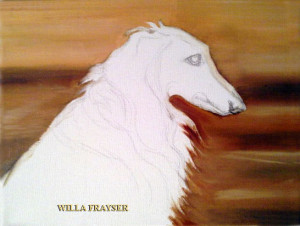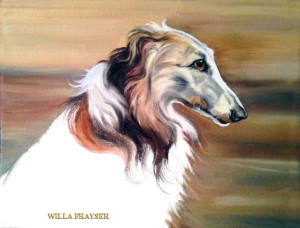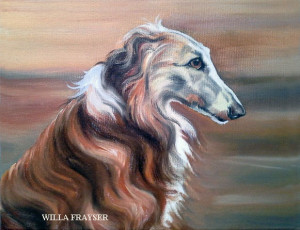I found I could say things with color and shapes that I couldn’t say any other way – things I had no words for. ~ Georgia O’Keefe
Eddie Dowd mentioned during his recent talk for the Toowoomba Wordsmiths on Storytelling for Children said: “storytelling has many mental, social and educational benefits for children. Storytelling is becoming a lost art as many parents find little time to spend with their children because of the demands and stresses of life.”
If this is true and I have no reason to doubt Eddie’s words, one can only hope the written word and the artist will not go the same way, relying on television and the digital world to entertain and create rather than use the unique, individual talents gifted to human beings.
The production.
I also read that drawing and modelling came well before the spoken word, in other words, man most likely drew a picture to communicate and express himself. Things which are difficult to describe in words can often be understood from a picture. I imagine this is the reason why picture books are such an effective learning tool for children. In saying this, even when I read the descriptive words in books an ‘inner’ vision is reproduced directly to my brain as an image I can clearly visualise in my minds eye.
Some painters transform the sun into a yellow spot, others transform a yellow spot into the sun. ~ Pablo Picasso
I’m staggered by the artistic skills I see on the Internet.The talent leaves me breathless. I could lose myself in the incredible drawings and paintings for hours if I allowed myself the time. It’s not only painters, photographers capture images of horses, landscapes and wildlife that defy the realism of the subject. Reality is also the focus for those who share life experiences to remind people of responsibilities, while others create art works and books that tell life changing stories to assist others to heal. All are composed exclusively within the ever growing sphere of art.
Colour is also important because it’s a well-known fact that colour tends to evoke emotions, reactions or moods in people. It’s important to consider how the colour of a product can affect our displays and ultimately, sales. Regardless of the colours used the right combination can send a powerful message and evoke strong reactions.
A continued variation.
Red – This colour is known internationally as a buying colour. It reflects emotions such as anger, lust and passion. It is a definite attention getter. When used in small amounts, it is the best colour to stimulate sales. However, if used in large amounts, it can turn off the more subtle customers. This colour is best used to draw attention to a specific message or area you want the customer to focus on.
Orange – This is known to be the most irritating of colours and the least favourite colour in the world. Direct mail marketers tend to use this on envelopes to draw attention to a product they are selling. Orange is best known as the colour for sexuality and creativity and is associated with affordability. This colour is also an attention grabber, but is best used sparingly or as an accent colour.
Purples and Violets – These colours are subjective, and people will either love them or hate them. Purple is associated with spiritual healing and royalty.
Blue – This was determined to be the best seller and the most favourite colour of people throughout the world, regardless of culture. Blue is considered the colour of communication; light blue leads to fantasy and dark blue leads to authority and power. Blue represents tranquillity, peacefulness.
Green – This is a relaxing colour that stirs up feelings of the outdoors, forest, grass and lush meadows. It is considered a passive, not a stimulating colour.
Yellow – Is the first colour seen by the retina. This is a good focus or attention-getting colour and a good accent colour when used in moderation.
Brown – Denotes traditional or natural values. Light shades of wood are associated with affordability; dark hued shades are associated with opulence and richness. Brown is a relaxing and casual colour. It is the colour of wood, the earth and nature.
Neutrals – Black or white are always a safe and effective accent. They enhance primary colours when used as an accent. When used exclusively, they give off an institutionalized or sterile feeling.
Pastels – Pastels are popular because they tend to blend with the popular colours of the season. They can be used in designs and products and will mix and match or blend with anything. The softer shades blend easily with primary colours, which tend to make the buying decision easier for the customer.
Surviving naturally
Times have changed and innovation is driving the world’s economy. Dr Philip E. Humbert www.philiphumbert.com or email Coach@philiphumbert.com says:
“To achieve your unique version of success, follow your heart. You become great by being exactly and uniquely yourself. This is a call for more eccentrics, more individuals, and more creative, unrepentant adventurers. Go where your heart and your instincts lead you. Instead of following the “normal” highway, blaze a new path and leave a trail for others to follow.”
Innovation is to bring in new things or methods. If there is anything I’ve manage to learn from my multiple decades of life is that we all have unique gifts to offer each other and each of our life experiences are well worth sharing. Possibly many of us who aspire to be a successful artist or writer have at least once expressed the words ‘I can’t even draw a straight line,’ or ‘I can’t string two words together’ in frustration By virtue of a deft mind and or hand the way you paint may be determined by what you paint and the way you write might be determined by your life experiences and what you read.
We all have individual likes and dislikes, but we don’t have to be touted to be better than someone else to be considered successful in our endeavours. Nor do we have to duplicate what others do. The key to being successful is not only working hard at what you love but finding a technique which suits your particular artistic style.
Successful reproduction
The secret of all effective artwork’s is not new words and pictures, but paralleling all the familiar words and pictures we love into new relationships





2 Responses
Willa Frayser
This was most interesting following the story and the creation of my painting of Midas! It really shows how paintings (or words) are layered to get the desired effect. Many people don’t really know how we get from point “A” to point “B”, but these photos really illustrate this process!! I so enjoyed creating this painting for you Carmel of your lovely Midas – and I hope everyone enjoys seeing the creative process!
Thank you and love and hugs,
Willa Frayser, International Equine Artist
Carmel Rowley
I agree Willa and he is on the wall smiling at me everyday.
I’m very blessed to have you and your glorious artwork in my life.
Love Carmel